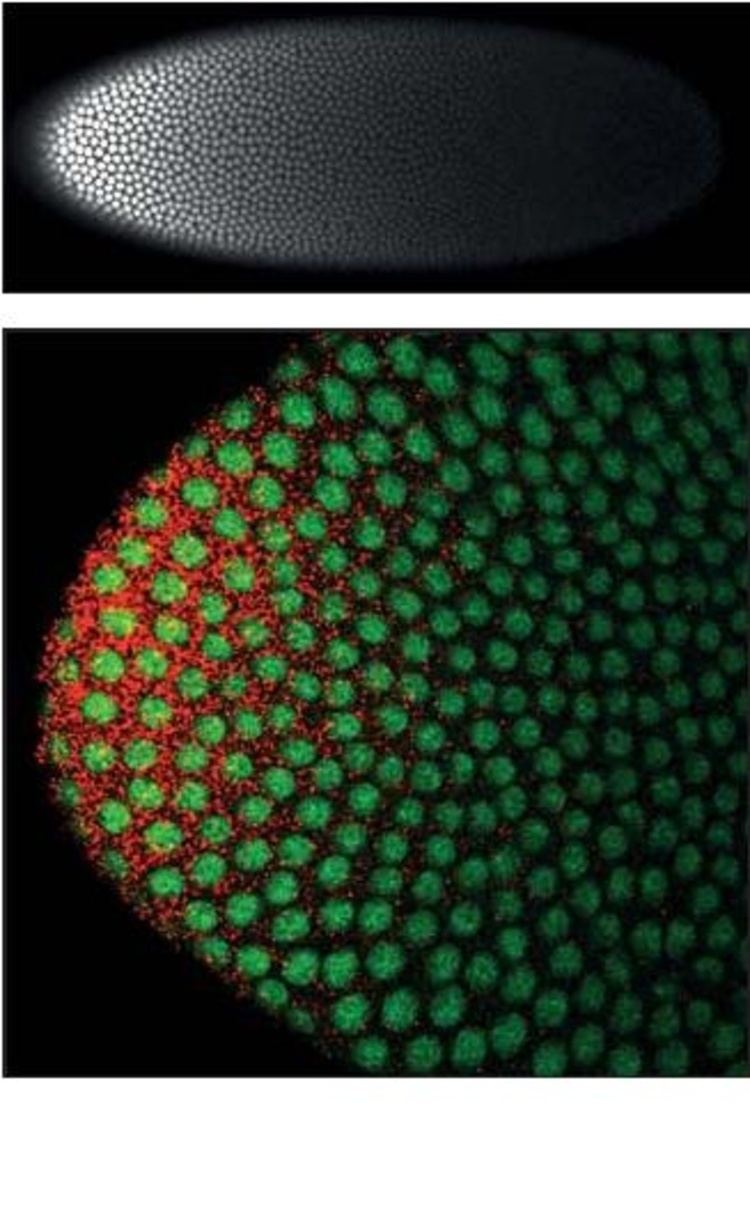 | ||
Bicoid is a maternal effect gene whose protein concentration gradient patterns the anterior-posterior axis during Drosophila embryogenesis. Bicoid was also the first protein demonstrated to act as a morphogen.
Contents
Role of Bicoid in axial patterning
bicoid mRNA is actively localized to the anterior of the fruit fly egg during oogenesis along microtubules and retained there through association with cortical actin. Translation of bicoid is regulated by its 3' UTR and begins after egg deposition: diffusion and convection within the syncytium produce an exponential gradient of Bicoid protein within roughly one hour, after which Bicoid nuclear concentrations remain approximately constant through cellularization. An alternative model proposes the formation of a bicoid mRNA gradient in the embryo along cortical microtubules which then serves as template for translation of the Bicoid protein to form the Bicoid protein gradient. Bicoid protein represses the translation of caudal mRNA and enhances the transcription of anterior gap genes including hunchback, orthodenticle, and buttonhead.
Structure and function of Bicoid
Bicoid is one of few proteins which binds both RNA and DNA targets using its homeodomain to regulate their transcription and translation, respectively. The nucleic acid-binding homeodomain of Bicoid has been solved by NMR. Bicoid contains an arginine-rich motif (part of the helix shown axially in this image) that is similar to the one found in the HIV protein REV is essential for its nucleic acid binding.
Bicoid protein gradient formation is one of the earliest steps in fruit fly embryo A-P patterning: the proper spatial expression of downstream genes relies on the robustness of this gradient to common variations between embryos, including in the number of maternally-deposited bicoid mRNAs and in egg size. Comparative phylogenetic and experimental evolution studies suggest an inherent mechanism for robust generation of a scaled Bicoid protein gradient. Mechanisms that have been proposed to effect this scaling include non-linear degradation of Bicoid, nuclear retention as a size-dependent regulator of Bicoid protein's effective diffusion coefficient, and scaling of cytoplasmic streaming.
